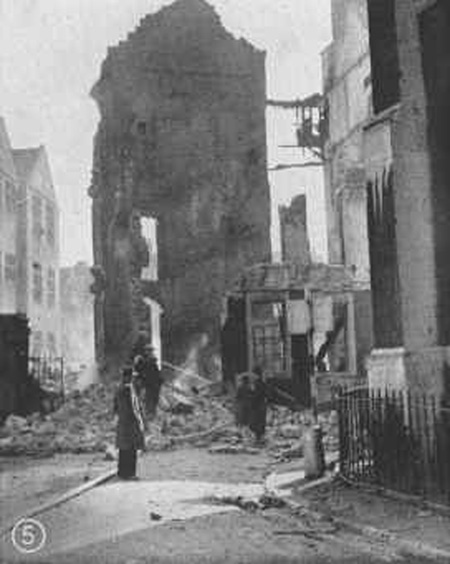Air Operations, Australia
P-40s of the 7th and 8th Pursuit Squadrons of the 49th Pursuit Group down 10 of 24 G3M 'Nell' bombers and 2 A6M Zeros over Darwin between 1430 and 1500 hours.
[Air Operations, CBI
2nd and 3rd AVG Squadron P-40s down 3 Japanese Army reconnaissance planes near Lashio, Burma during the afternoon.
[Air Operations, Europe
The Germans bomb Bath. In the next few days Norwich, York, Hull and Exeter are all hit.
Historic Bath Bombed in Another Baedeker Raid |
 |
There is a heavy raid on Leningrad.
BOMBER COMMAND- 36 Bostons are sent on Circus operations to the Abbeville railway yards, the Morliax airfield, and harbor targets at Cherbourg, Le Havre and Dunkirk. 29 aircraft drop their bombs. 2 Bostons are lost in these operations.
- 128 aircraft of 6 types are sent to Rostock, 110 top the town and 18 to the Heinkel factory. Heavy bombing of the town with many fires being started. The Heinkel factory is hit for the first time by Manchester from 106 Squadron commanded by Wing Commander Guy Gibson. No aircraft are lost, but crews report the Flak defenses have been strengthened.
- In minor operations, 6 Stirlings carry out a long-range attack on the Sköda armaments factory in Pilsen, Czechoslovakia. Cloud covers the target upon arrival and at least 5 of the planes drop their loads. 32 aircraft are sent to Dunkirk, 2 Blenheim Intruders to Holland, and 5 planes on leaflet flights. 1 of the Stirlings is lost on the Pilsen raid.
Air Operations, North Africa
A Free French bomber squadron attacks Italian outposts in southern Libya.
[Burma
Although the Japanese fail to hold Taunggyi which is now defended by Chinese 5th Army, they continue to move toward Lashio, a position of great strategic importance. To the west, Gen Alexander orders that the forces around Meiktila should withdraw from the Meiktila-Kyaukpadaung line to the north bank of the Irrawaddy. In the Meiktila sector the Chinese 22nd Division withdraws from Pyawbwe and is surrounded by the Japanese.
[New Caledonia
US troops land on the Free French colony of New Caledonia. The island's capital, Nouméa, will become a major US naval base.
[North Africa
With clearer weather, air activity is resumed over the whole front. Axis formations attack Tobruk harbor, while British aircraft carry out a night raid on Benghazi.
[Pacific
The US submarine Spearfish (SS-190) torpedoes the Japanese transport Toba Maru (7296t) off southwestern Luzon.
[